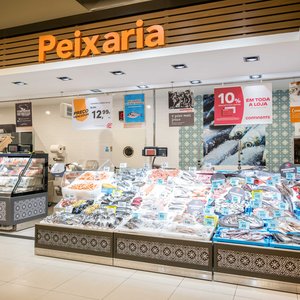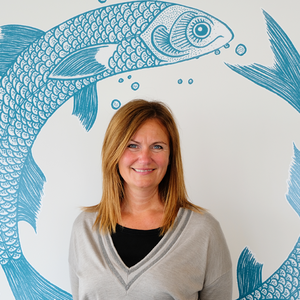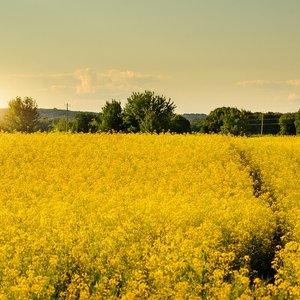Creating a Dream Breed
Blackspot seabream is a prized fish on many Spanish tables but it grows slowly at sea, is heavily overfished and is incredibly difficult to farm. No European company had successfully bred it until one Galician company teamed up with a local partner and Norwegian nutritionists to develop a method as a EUREKA project.
Open up any Spanish cookery book and there it is: a meaty fish usually cooked with its skin; in one recipe baked Aragonese style with garlic, lemon, brandy and sweet pepper; in another served in a garlic and herb tomato sauce. The besugo – known in Latin as Pagellus bogaraveo and in English as blackspot seabream – is a traditional fish on Spanish tables and also savoured on others in Greece, France, Italy and Germany. However, this deep-water species was fast turning into something of a luxury due to overfishing until a company in the fishing region of Galicia embarked on a EUREKA project to find a way to make them affordable for ordinary families.
Isidro de La Cal-Fresco, which farms all kinds of fish in A Coruña in Spain, decided in 1997 it should start producing blackspot bream as well. “When we gave up farming salmon, we began to think about producing a fish which would thrive in our local conditions,” said Isidro’s Aquaculture Division Director Antonio Lopez-Pizarro y Vilar.
“We begun searching local species with high market values and finally we decided to try with besugo,” said Lopez-Pizarro. But its efforts to farm the fish initially showed only that it was a far trickier affair than farming its brother the gilthead sea bream, also known as the dorada. Less than one percent of the fish bred survived and many of them had deformities. Breeding blackspot was going to involve a great deal of know-how, which was probably why no other European fish farm was doing it. Isidro´s Aquaculture Division Director Antonio Lopez-Pizarro y Vilar realised developing a breeding method for the fish was a commercial gamble – but if successful his company would be the only one in the market initially.
With help from EUREKA, Isidro found funding and two specialist partners – one a fellow Spanish company called Luso-Hispana de Acuicultura which had reared blackspot larvae before, and Nutreco Aquaculture Research Centre, which developed ideal diets for fish.
“For us the project was about increasing our knowledge about a new species of fish for aquaculture,” says Fernando Sanz, Nutreco’s coordinator on the project and the firm’s commercial manager in Spain. Nutreco’s nutritionists set out to design a diet for the blackspot seabream. For months they monitored a variety of foods, using color markers so they could track how they were digested in the fish. They carried out their practical experiments in A Coruña and Nutreco experts analysed the effect various foods had on the fish’s development at their laboratory in Burgos, northern Spain.
“It is a slow process,” says Sanz. “But we developed a commercial diet which helps them grow quicker in less time. In the sea, they take years to grow, maybe five years and with our diet and the method we developed they grow in half the time.” Sanz’s team called the food they developed Besugo Power, since it gives the blackspot seabream a high energy diet, and they are now selling it commercially.
For blackspot bream to flourish at the A Coruña farm, however, the partnership had to focus on more than just what they ate. Blackspot are very fragile fish and can be easily stressed in captivity, which leads them to die suddenly. As a deep-water species, they are used to living at depths of 150-300 metres in dark, stable, cold temperatures. Feeding and caring for the fish on the farm from the larval stage to hatching and then rearing the young fish - known as fry - until they reached market size of 500g had to take account of the changes in water temperature during the season, waves and predators such as birds and dolphins which are present on the farm but not in the blackspot bream’s deep-sea natural habitat.
Normally fish farms can buy fry from a specialist producer and then rear the fish to market size but there are no blackspot seabream juvenile producers so Luso-Hispana’s participation in the project was particularly crucial. It developed a larval rearing technique which produced less fish than previous trials but which finally produced higher survival rates, lower rates of deformed fish, and which required less people to tend the developing larvae, therefore cutting costs. “We faced a lot of problems both in the hatchery stage and in the on-growing phase,” remembers Lopez-Pizarro y Vilar. “We had to define many protocols regarding culture densities, appropriate temperature, feeding methods, transportation densities and feed.”
Price is right
But, despite the setbacks, working together, the three partners managed to refine a way to breed blackspot which consistently produced enough healthy fish at a competitive price. Seven years ago, Isidro De La Cal-Fresco started selling blackspot seabream to supermarkets in Spain, which were able to sell it on to consumers for far more attractive prices than previous market prices of between 20-70 euros a kilo.
Today, Isidro sells about 200 tonnes of the fish a year and it thinks it can increase that to 600 tonnes within the next five years. The market potential is enormous since, while Isidro’s prices can remain stable in the future, the price of blackspot seabream fished from the sea is likely to continue to rise as fishing quotas for the species are cut on a yearly basis. The partners say they have clearly achieved their goal to deliver a traditional fish back to the European market at an accessible price. They have created new products for their companies to tap new markets.
“As a company, we have developed a new species for aquaculture in less than 10 years,” says Lopez-Pizarro y Vilar. “No one else knows how to feed and produce blackspot,” agrees Sanz. “The advantage of farming seabream is that you have total control of the production and the food is safer.”







